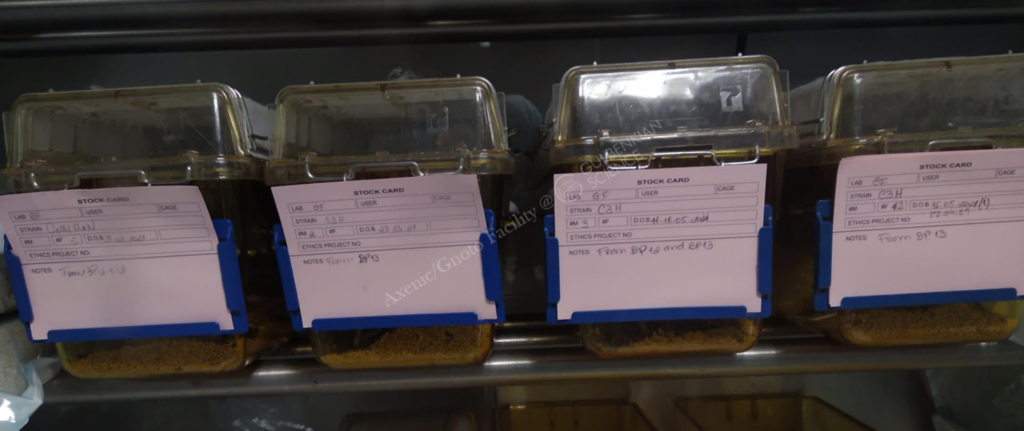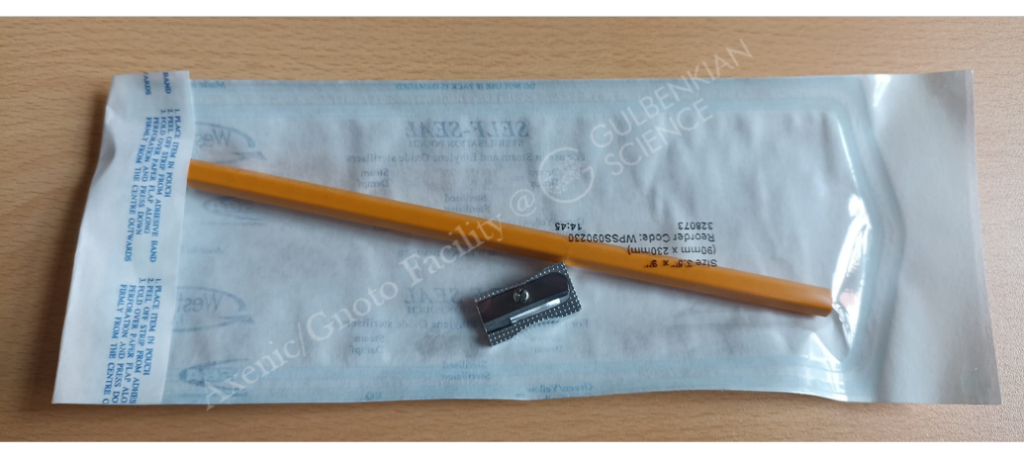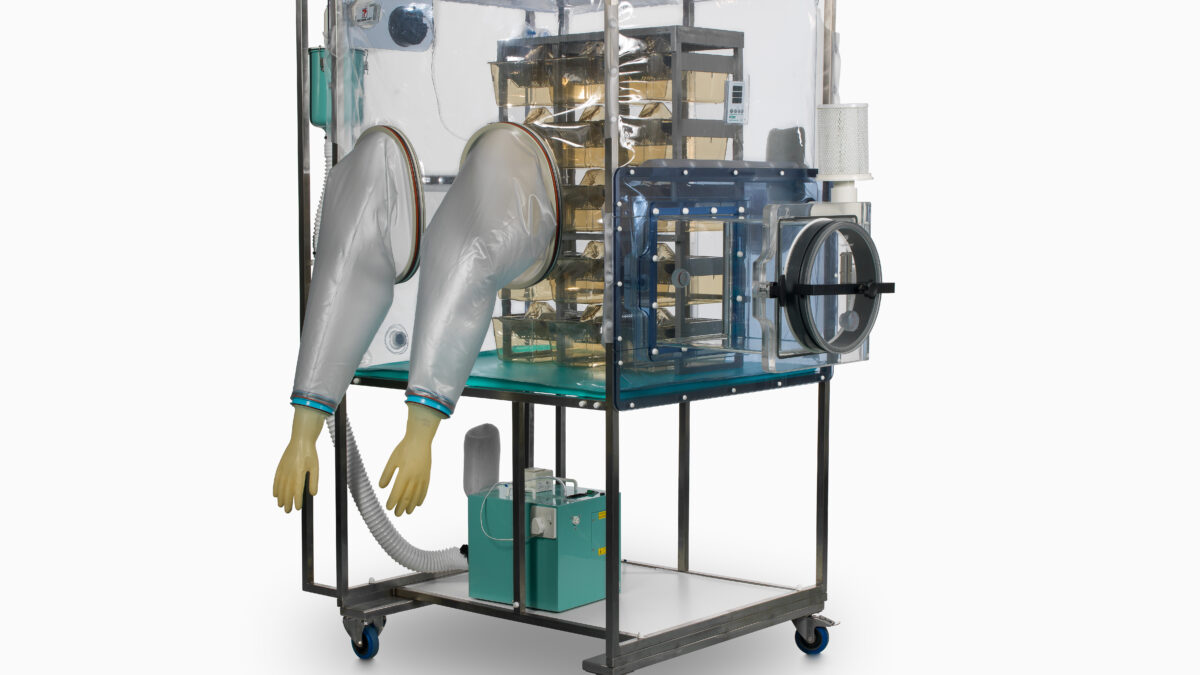Written by M.G Staff and Joana Bom (Axenic/Gnotobiology and Mouse Facility Manager – Instituto Gulbenkian de Ciência, Portugal)
While nowadays gnotobiology experiments are often performed inside dedicated cages that mimic an isolator at cage level, Isolators are still widely used in gnotobiotic facilities, mainly to breed or maintain stock colonies of germ free mice.
Inside an isolator, the cages used are conventional/open, and the axenic mice are all exposed to the same environment inside the canopy, considered a microbiological unit. All the procedures required to bring the needed sterile material inside, are performed very carefully, ensuring a proper maintenance of the sterility of the isolator.
Different isolators, and different facilities, have different procedures for the introduction of sterile materials. The materials can be either autoclaved, irradiated (and external surface decontaminated on the isolator transfer port), or fully decontaminated with a sterilization agent on the transfer port. As this is troublesome, increasing the workload of gnotobiotic facilities, some prefer to decrease the number of materials to introduce, especially some materials that may be considered unnecessary. This is the case of ID cards, label/card holders, or writing materials.
Several gnotobiotic facilities do prefer not to use label/Card holder inside the canopy and just keep them outside, or even previously scratch the surface of the cage bottoms with an identification number, that will then be associated with the animals ID.
Other facilities, where the operators use the label/card holder on each cage (example in pictures 1 and 2), need to bring in all the materials to write on cards. Like any other material, writing materials must be sterilized prior to entering the isolator. Pencils or sharpies pens can be used, but the best, cheapest, and easiest practise is to use pencils.
There are two possibilities to sterilise and then introduce a pencil inside the isolator: irradiation or autoclave. Some facilities put the pencils inside bags (double bag), vacuum packed, then irradiated, and finally they can be inserted in the isolator from the transfer port, after decontamination of the external surface. This increases the time needed to introduce this material.
The alternative way is the use of the autoclave cylinders or drums, and autoclave pencils with the rest of the dry supplies. Pencils can be replaced when they are blunt or break, but it is also possible to sterilize metal sharpeners inside the cylinder and leave them ready to use inside the isolator (example in picture 3). Pencils can then be used all over, until it is no longer possible to write with them. Using this system, all materials are autoclaved together, not increasing the workload or sterilization time, and the cages are properly identified. It is also environmentally friendly, as pencils can be autoclaved several times, and be used until the end.
If you are not using card/label holders inside your isolators, just to decrease the materials to autoclave, try the pencil + sharpener introduction. It works like a charm!
Photo Credits : Axenic/Gnotobiology and Mouse Facility – Instituto Gulbenkian de Ciência, Portugal



Recent Articles
- Gnotobiotic facilities: writing inside isolators 4 April 2022
- Germ-free cage sterilization 24 January 2022
- Microbiota and its importance in aging 25 October 2021
- Procedural diversity and technical choices working with gnotobiotic mice in IVCs. (part 2) 27 September 2021
- Procedural diversity and technical choices working with gnotobiotic mice in IVCs. (part 1) 30 August 2021
DVC – Digital Ventilated Cage for digital vivarium

The DVC® is capable to provide novel insights and enhance animal welfare checks thanks to the automatic data collection directly from the cage level. Specifically designed DVC® board enables different benefits for the researchers and vivarium people.


